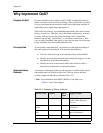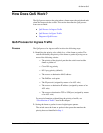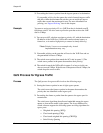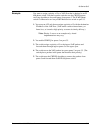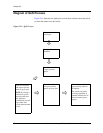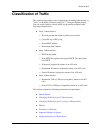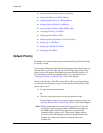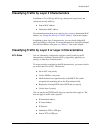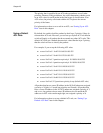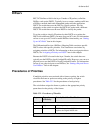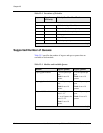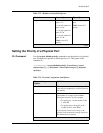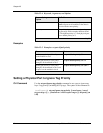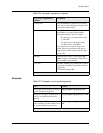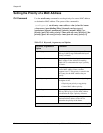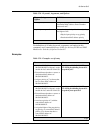
25-10 User Guide for the Avaya P580 and P882 Multiservice Switches, v6.1
Chapter 25
The priority that is specified by an ACL takes precedence over all other
priorities. Because of this precedence, the switch determines whether a rule
in an ACL exists for an IP packet in the final stage of classification. If an
ACL exists, the priority associated with the ACL replaces the current
priority of the frame.
For information on how to set a rule in an ACL, see “Setting Up an ACL
Rule” later in this chapter.
Using a Default
ACL Rule
By default, the switch classifies packets by their layer 2 priority, if they do
not match an ACL rule. However, you can set up a default ACL rule that the
switch will apply to all packets that do not match any other ACL rules. This
default ACL rule sets a default characteristic, other than the layer 2 priority,
that the switch will use to classify the packets.
For example, if you set up the following ACL rules:
■ access-list List1 1 fwd2 10.10.60.0 0.0.0.255
■ access-list List1 2 fwd4 10.10.70.0 0.0.0.255
■ access-list List1 3 permit use-priority 4 10.10.80.0 0.0.0.255
■ access-list List1 4 permit use-priority 6 10.10.90.0 0.0.0.255
■ access-list List1 5 fwd1 10.10.100.0 0.0.0.255
■ access-list List1 6 fwd4 10.10.110.0 0.0.0.255
■ access-list List1 7 fwd7 10.10.120.0 0.0.0.255
■ access-list List1 8 fwd8 10.10.130.0 0.0.0.255
■ access-list List1 512 permit use-priority 6 any (default ACL rule)
All packets that have a source IP address in the 10.10.60 subnet are assigned
a priority of 1(fwdx is 1 based, but priorities are 0 based.) All packets that
have a source IP address in the 10.10.70 subnet are assigned a priority of 3,
and so on. Any packets whose source IP addresses do not match the IP
addresses in ACL rules one through eight, are assigned a priority of 6.
For information on how to set up a default ACL rule, see “Setting Up a
Default ACL Rule” later in this chapter.



